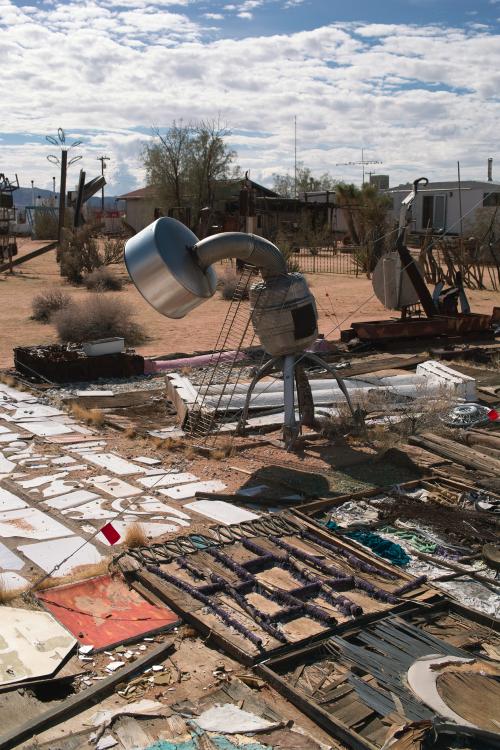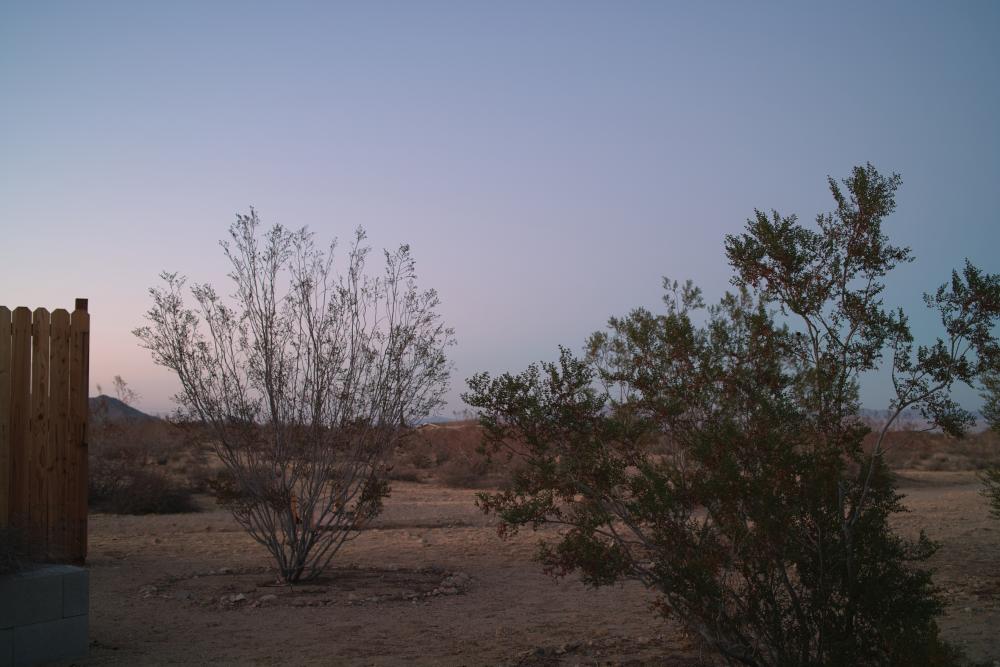
cantsin
Members-
Posts
948 -
Joined
-
Last visited
Content Type
Profiles
Forums
Articles
Everything posted by cantsin
-
Panasonic GH5 Review and exclusive first look at Version 2.0 firmware
cantsin replied to Andrew - EOSHD's topic in Cameras
Since I'm talking to the man... Would it be an option to design an anamorphic Speed Booster? If it's technically feasible, I'm sure people would go nuts over it... -
EOS-M is 8mm sensor-equivalent when you use the sensor crop mode (which is, in any case, the only way to get raw square pixel video on this camera). - Kodak's Super 8 camera is analog, has been delayed several times, and its price has now been increased to $2000 - while you can get great Super 8 cameras like Beaulieu, Nikon R10, Leicina Special and Canon 840/1040xl for a fraction of this as serviced second-hand cameras.
-
Too bad that Pentax Q doesn't have a decent video codec. I'm still waiting for a ultracompact camera with 8mm film-equivalent sensor size and raw video recording. (For the time being, I use the EOS-M with MagicLantern for that purpose...)
-
Unless you use a proper video output card (like a Deck Link), you'll merely output 8bit video in RGB. On top of that, your NLE may reduce image detail (if, as you wrote, it doesn't skip frames) for real-time playback.
-
BM Pocket. Was one of the first buyers/owners of the camera 4 years ago, and it's still my main camera.
-
The Cinema5D article is indeed an advertorial for the C200 because: (a) it makes a false binary juxtaposition of Raw vs. DSLR-h264, as if intermediate options (like in-camera high-bitrate 10bit/12bit codecs + Log) didn't exist; (b) it narrows down the choice of Raw cinema cameras to one between RED and the C200, with the implicit message to the reader that Raw becomes affordable with the C200 - without mentioning Blackmagic or the raw recording options for Sony FS5/7 (let alone MagicLantern...) even once. (c) leaves out the information that so far, traditional Raw image manipulation controls (such as WB adjustment in post) aren't available for the C200's proprietary Raw codec. (In Resolve, which officially supports C200 Raw with version 14, the Raw tab isn't available for C200 Raw footage.)
-
LukiLink project turns smartphones into an HDMI monitor
cantsin replied to Andrew - EOSHD's topic in Cameras
I see the value of the LukiLink as an inexpensive mini gadget that you can always carry with you and pull out of the bag whenever a shooting situation requires external monitoring - i.e. in shoots where you normally work without a field monitor. (For shoots where you rely on a field monitor as your always-on workhorse, I'd rather get an Ikan or SmallHD.) -
Sorry! It's another "What camera?"question.
cantsin replied to Ricardo Constantino's topic in Cameras
Raw, which is important because you get an unprocessed image on which you can run the highest-quality, computationally most intensive denoising (=Neat Video). And apologies for my math black-out. It's 12,800 ISO, of course. (But it's too late to edit my original post.) Yes, but with some strings attached because you can't use Speed Boosters with the 7D, and the sensor pixels of that camera are smaller (and most of them are skipped in the read-out for the recording). I only have experience with MagicLantern raw from the EOS-M (which has about the same sensor as the first-generation 7D), and I'd say that it has about 2 stops less dynamic range than the Blackmagic cameras, and should be best shot at 100 ISO. - Codec quality/lack of compression/quality of signal processing indeed plays a major, often grossly underestimated role, as Steve Yedlin's now-famous video about resolution myths demonstrates. Yes, but only if you max out the possibilities of raw and have a fast computer to run Neat Video at highest quality settings (temporal denoising with 3 or more frames in HQ setting) inside Resolve, directly on the CinemaDNGs, with no proxies generated in between. Neat Video really loves raw image data where all the original sensor noise is preserved. -
Sorry! It's another "What camera?"question.
cantsin replied to Ricardo Constantino's topic in Cameras
It depends. I use both an A7s (primarily as a stills camera), the Blackmagic Pocket Camera with 0.58x Speed Booster and the Blackmagic Cinema Camera with a 0.64x Speed Booster. No question that the big-pixel full frame sensor of the A7s performs several leagues above the 1" sensor of the Pocket and the MFT-equivalent sensor of the BMCC. But if you record internally, the Sony's comparatively weak video signal processing and low-bandwidth video codec really limits the real-world results. (External recording won't solve those issue either since it's limited to 8bit and doesn't bypass the camera's internal signal processing.) Conversely, when you shoot CinemaDNG with the Blackmagics and use Neat Video's temporal denoising in post, you can push the material up to 4 stops from 800 ISO to 128,000 ISO without things falling apart. If you add the Speed Booster, you gain an extra 1.33 or 1.67 stops to an equivalent of around 320,000 ISO. However, if you shoot SLog2 on the A7s (to preserve dynamic range), you really should stay with the native 3200 ISO and do not go above 6400 ISO simply because the weak 8bit-Codec doesn't preserve enough information for recovery in post. - Of course, you can also tweak things on the A7s by shooting in APS-C crop and using a 0.71x Speed Booster, by using an external recorder, and use a Rec709 profile at higher ISOs instead of SLog2 and simply put up with more limited dynamic range. To illustrate what I mean, here's a video I shot with the A7s in SLog2 at ISO 3200/6400 (using some Neat Video post) - on top of the general limitations of the camera's codec, I was also badly affect by the camera's allergy to blue LED light under tungsten WB: Here are two videos shot at the same venue, under the same light conditions, with the BM Pocket and 0.58x Speed Booster: IMHO, the BM Pocket created a better image than the A7s (without Speed Booster and using the internal codec). And finally, an extreme example of BM Pocket footage recorded in an almost dark space (where the status LEDs of the performer's audio equipment served as practical lights), shot with Sigma 18-35mm/1.8 on the 0.58x Speed Booster with wide open aperture and pushed 4 stops to 128,000 ISO in Resolve + temporal noise reduction with Neat Video in Resolve: So, IMHO the low-light capabilities of the A7s are overrated - not in stills mode, but in video mode. -
LukiLink project turns smartphones into an HDMI monitor
cantsin replied to Andrew - EOSHD's topic in Cameras
Point taken, mixed up this example - sorry! -
LukiLink project turns smartphones into an HDMI monitor
cantsin replied to Andrew - EOSHD's topic in Cameras
With all due respect, but you're living in a dream world. We hardly know of any photo and electronics product who the actual manufacturer is. For example, it is well-known that Olympus, Cosina and Tamron are among the biggest manufacturers of lenses which have all kinds of brands. It recently turned out that the 85mm/1.8 Sony e-mount lens is internally identical to the Zeiss 85mm/1.8 lens - and it could well be that Cosina or Tamron is the actual manufacturer. When Samsung was still in the camera business, their first cameras were created in collaboration with Pentax, and Samsung's lenses were Pentax-branded. Then Samsung switched partners, and the same lenses were suddenly branded "Schneider-Kreuznach". Another example: Studio flash manufacturer Bowens just went out of business because it could no longer compete with Chinese brands like Godox and Yongnuo - but actually, these Chinese companies were also the manufacturers of Bowens and other Western brands. So, the manufacturer of the LukiLink hardware will be some company in Shenzhen where practically all consumer electronics of the world (including iPhones) are being produced. It will be a name nobody of us will have heard of, because they'll like only do OEM production for other brands. -
LukiLink project turns smartphones into an HDMI monitor
cantsin replied to Andrew - EOSHD's topic in Cameras
If Lukilink is a "borderline scam", then... SLR Magic lenses would be a "borderline scam", too, because most of them are adapted third-party industry camera lenses... Digital Bolex would have been a "borderline scam", because the camera used the same basic technology as the Prosilica gx2300 industrial camera, "only" adding a display, new camera housing, recording and color science... Most Leica cameras would be "borderline scams" because their camera electronics is from Panasonic... -
Found the D5 too warm and punchy, A9 and Canon were my favorites.
-
LukiLink project turns smartphones into an HDMI monitor
cantsin replied to Andrew - EOSHD's topic in Cameras
Power will be the issue because the USB port will be blocked by the adapter and therefore not available for charging. On top of that, only top-of-the-line Android phones support video over USB. -
Can we please get the American culture wars out of this forum? This is off-topic, vitriolic, divisive stuff with no relation to filmmaking, and no prospect of anything but ideological flamewars. Moderators, please moderate and close this topic. Thank you.
-
I find it rather questionable that Panasonic sells lenses with the Leica brand that rely, as LensTip writes, on heavy software geometry correction. From a high-end brand, you'd normally expect that their lenses are optically corrected.
-
It doesn't make sense to discuss political issues on a European forum where most members happen to be Americans who live in their domestic culture wars and thus get triggered by any politically loaded word. There's a danger that subjects like this will turn this forum into Reddit or 4chan.
-
Thanks for the correction - this seems to be an issue of the U.S. versus the rest of the world. The Black Satin filter aren't available as screw-ons in Europe (or at least I haven't been able to find them yet).
-
No, because they aren't available as screw-on filters and therefore out of reach for most people here.
-
By screwing filters onto a modern lens, you can only influence contrast, sharpness, flares and color rendering - but not bokeh and geometry/distortion.
-
Check out this: http://www.verticalcinema.org They even work with analog projection (and modified projectors). - In the smartphone age, vertical video is IMHO more relevant as an innovation of filmmaking than VR, 3D, AR and what have you. Those who will first be able to creatively work with this format, and invent new filmic languages for it (just like Western movies invented a filmic language for widescreen cinema), will win. Conservatives will lose.
-
Creative Commons music licensing for a film questions
cantsin replied to manueldomes's topic in Cameras
Actually, you need to make the film available under CC ShareAlike. Here's the info from the Creative Commons website: "ShareAlike music being used as the soundtrack to a video. This is one explicit requirement of the SA licenses, which provide that all synching of SA-licensed music with other content creates an adaptation. In these instances, the resulting video must be under a ShareAlike or compatible license." https://wiki.creativecommons.org/wiki/ShareAlike_interpretation -
Creative Commons music licensing for a film questions
cantsin replied to manueldomes's topic in Cameras
Your sound design is a transformation according to the license, so that means that you must make your sound file available under the same license. It is sufficient if you provide the file upon request (let's say by E-Mail); you don't have to upload it to a server. All CC licenses have a logo and a short text for inclusion in the imprint of publications (such as books and records); you should include these in the closing credits of your film. -
This article says the opposite (I'm just linking it and have no opinion on the subject matter): https://petapixel.com/2017/01/27/x-trans-promise-problem/


